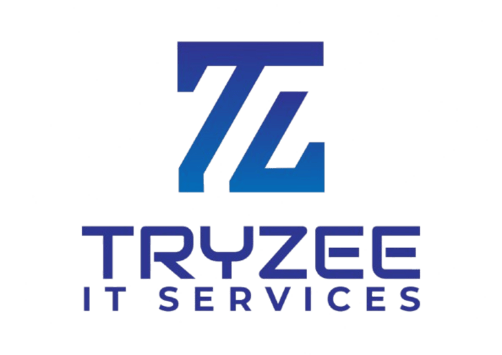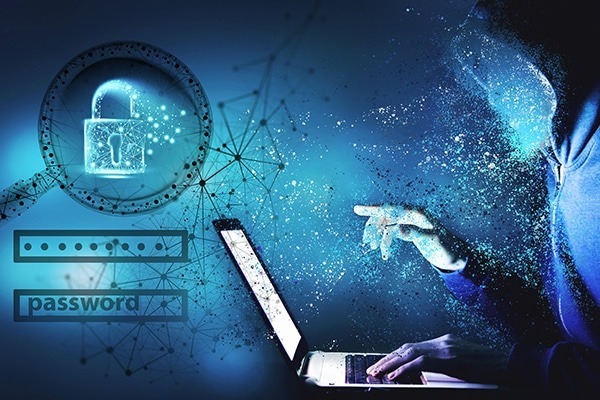Critical Cybersecurity Threats Businesses Facing in 2025
In an increasingly digital world, businesses face a constantly evolving landscape of cybersecurity threats. As technology advances, so do the tactics of cybercriminals, making it crucial for organizations to stay informed and prepared. This article delves into the most significant cybersecurity threats that businesses need to be aware of in 2024, offering insights into their nature, potential impacts, and strategies for mitigation.
You can also check out our all-rounder managed security services.
1. Advanced Persistent Threats (APTs)
Advanced Persistent Threats (APTs) continue to be a major concern for businesses in 2024. These sophisticated, long-term attacks are typically orchestrated by well-funded groups, often with state backing.
Key Characteristics of APTs:
- Stealthy and persistent nature
- Targeted approach, often focusing on high-value assets
- Use of advanced techniques to evade detection
Impact on Businesses:
APTs can lead to significant data breaches, intellectual property theft, and long-term damage to a company’s reputation and financial standing.
Mitigation Strategies:
- Implement robust network segmentation
- Utilize advanced threat detection systems
- Regularly update and patch all systems
- Conduct frequent security audits and penetration testing
2. Ransomware Evolves: The Rise of Double Extortion
Ransomware attacks have taken a more sinister turn with the emergence of double extortion tactics. This approach combines traditional ransomware encryption with data theft, putting additional pressure on victims.
How Double Extortion Works:
- Attackers infiltrate systems and encrypt data
- Before encryption, sensitive data is exfiltrated
- Victims are threatened with both data loss and public release of stolen information
Business Impact:
- Financial losses from ransom payments and operational downtime
- Reputational damage from data leaks
- Potential legal and regulatory consequences
Prevention and Response:
- Implement robust backup and recovery systems
- Educate employees on phishing and social engineering tactics
- Develop and regularly test an incident response plan
- Consider cyber insurance to mitigate financial risks
3. AI-Powered Cyber Attacks
As artificial intelligence (AI) becomes more sophisticated, cybercriminals are leveraging this technology to enhance their attack capabilities. AI-powered attacks represent a significant leap in the complexity and effectiveness of cyber threats.
AI in Cyberattacks:
- Automated vulnerability discovery and exploitation
- Advanced social engineering through AI-generated content
- Intelligent evasion of security systems
Challenges for Businesses:
- Increased speed and scale of attacks
- More convincing phishing and social engineering attempts
- Difficulty in distinguishing between human and AI-generated threats
Countermeasures:
- Invest in AI-powered security solutions
- Enhance employee training to recognize sophisticated phishing attempts
- Implement multi-factor authentication across all systems
- Regularly update and adapt security protocols to address AI-driven threats
4. Supply Chain Attacks
Supply chain attacks have gained prominence, targeting businesses through their vendors and service providers. These attacks exploit the trust relationships between companies and their partners.
Anatomy of Supply Chain Attacks:
- Compromise of a trusted vendor’s systems or software
- Distribution of malicious updates or components to end-users
- Exploitation of shared access and permissions
Business Implications:
- Widespread impact affecting multiple organizations
- Difficulty in detection due to the trusted nature of the source
- Potential for significant data breaches and system compromises
Risk Mitigation:
- Conduct thorough vendor risk assessments
- Implement strict access controls and monitoring for third-party systems
- Develop incident response plans that include supply chain scenarios
- Regularly audit and verify the security practices of key suppliers
5. Cloud Security Vulnerabilities
As businesses continue to migrate to cloud environments, the security challenges associated with cloud computing have become more pronounced. Misconfigurations and inadequate security measures in cloud environments present significant risks.
Common Cloud Security Issues:
- Misconfigured cloud storage buckets leading to data exposure
- Inadequate access controls and identity management
- Lack of visibility into cloud infrastructure security
Potential Consequences:
- Data breaches exposing sensitive customer information
- Compliance violations and regulatory penalties
- Reputational damage and loss of customer trust
Best Practices for Cloud Security:
- Implement a robust cloud security posture management (CSPM) solution
- Regularly audit and review cloud configurations
- Utilize encryption for data in transit and at rest
- Enforce strong access controls and multi-factor authentication
- Provide comprehensive training on cloud security best practices for IT staff
6. Internet of Things (IoT) Vulnerabilities
The proliferation of IoT devices in business environments has expanded the attack surface for cybercriminals. Many IoT devices lack adequate security measures, making them potential entry points for network breaches.
IoT Security Challenges:
- Limited computational power for robust security measures
- Difficulty in patching and updating large numbers of devices
- Lack of standardization in IoT security protocols
Risks to Businesses:
- Unauthorized access to networks through compromised IoT devices
- Data theft from unsecured IoT sensors and systems
- Potential for large-scale DDoS attacks using IoT botnets
Securing IoT Ecosystems:
- Implement network segmentation to isolate IoT devices
- Regularly update and patch IoT firmware
- Enforce strong authentication for all IoT devices
- Conduct regular security assessments of IoT deployments
- Consider IoT-specific security solutions for comprehensive protection
7. Insider Threats: The Enemy Within
Insider threats, whether malicious or unintentional, continue to pose a significant risk to businesses. With the rise of remote work, the potential for insider-related security incidents has increased.
Types of Insider Threats:
- Malicious insiders intentionally causing harm
- Negligent employees unintentionally compromising security
- Compromised insider accounts used by external attackers
Impact on Organizations:
- Data breaches and intellectual property theft
- Sabotage of critical systems and operations
- Financial losses and reputational damage
Mitigating Insider Threats:
- Implement robust access controls and the principle of least privilege
- Use employee monitoring tools responsibly and ethically
- Provide comprehensive security awareness training
- Develop and enforce clear security policies and procedures
- Implement behavioral analytics to detect anomalous user activities
8. Deepfake Technology in Social Engineering
The advancement of deepfake technology has introduced a new dimension to social engineering attacks. Cybercriminals are using AI-generated audio and video to impersonate executives and manipulate employees.
Deepfake Tactics in Cybersecurity:
- Voice phishing (vishing) using synthetic audio
- Video-based impersonation for high-level fraud
- Manipulation of digital identities for unauthorized access
Risks to Businesses:
- Financial fraud through convincing impersonations
- Reputational damage from manipulated content
- Erosion of trust in digital communications
Countering Deepfake Threats:
- Implement multi-factor authentication for sensitive operations
- Develop verification protocols for high-risk communications
- Invest in deepfake detection technologies
- Educate employees on the risks and signs of deepfake content
Conclusion: Staying Ahead of the Curve
As we navigate the complex cybersecurity landscape of 2024, businesses must remain vigilant and proactive in their approach to digital security. The threats outlined in this article represent just a fraction of the challenges organizations face in protecting their digital assets and maintaining the trust of their stakeholders.
Key takeaways for businesses:
- Invest in advanced security technologies and AI-powered solutions
- Prioritize employee education and awareness training
- Develop and regularly test comprehensive incident response plans
- Stay informed about emerging threats and evolving attack vectors
- Foster a culture of security throughout the organization
By understanding these top cybersecurity threats and implementing robust security measures, businesses can enhance their resilience against cyber attacks and safeguard their operations in an increasingly digital world. Remember, cybersecurity is not just an IT issue—it’s a critical business imperative that requires ongoing attention, investment, and adaptation.



